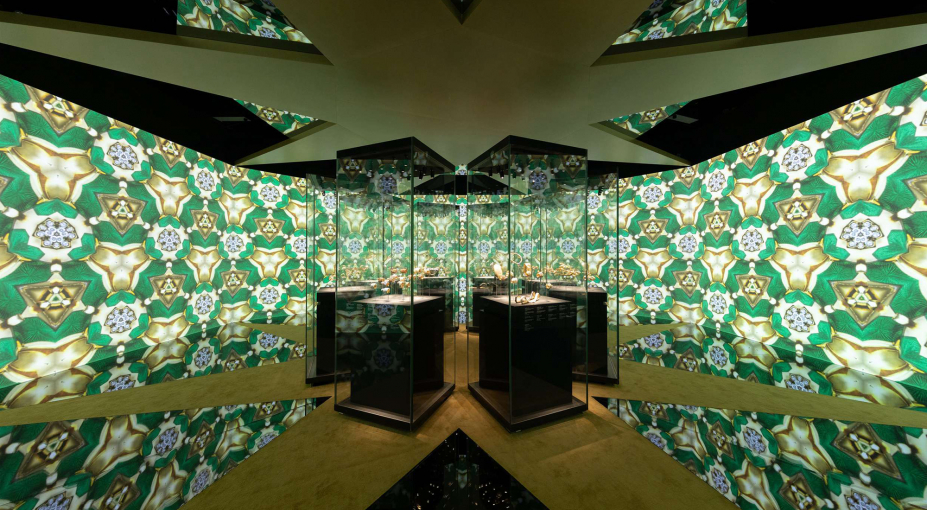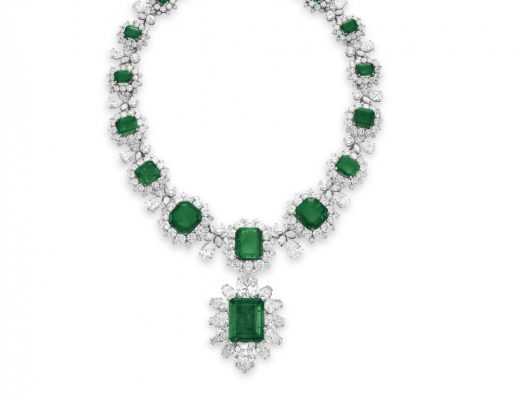Having held the “SerpentiForm” exhibition in Rome in 2016 and Singapore and Tokyo in 2017, Bulgari presents their Chinese patrons with a feast of precious Bulgari Serpenti pieces at Chengdu Museum in China this year. The show runs until August 25th. Jean-Christophe Babin, Chairman and CEO of Bulgari, attended the opening ceremony and gave an introduction of exhibition contents with Brand ambassadors Kris Wu and Jolin Tsai joining the conversation.
The Serpenti design has always been a distinctive element of Bulgari’s jewelry. Stylized serpent ornament reconciles a powerful vibe with a glossy elegance. The Bulgari Serpenti bracelet-watch worn by Elizabeth Taylor in Cleopatra, for example, heightens a sense of dangerous beauty of the movie where Taylor (as Cleopatra) shines with her starring Bulgari pieces. At the “SerpentiForm exhibition” held at Chengdu Museum this year, visitors can not only appreciate a rich collection of Bulgari’s serpenti creations, but engage in a discussion about the symbolism associated with serpents in both Western and Eastern cultures.
As a common symbol in artistic creations, serpent tends to be given various meanings in different cultural contexts. While the serpent is associated with seductiveness and reproduction in Western culture, its counterpart in Chinese artworks often stands for power, wealth and war. Thus, it’s not surprising to see how the tone of art varies depending on the reading of serpents. At this year’s “SerpentiForm” exhibition in Chengdu, The Sin by Franz von Stuck (1909) is a great example of showing how Stuck as an European artist orchestrates serpent as a literal personification of evilness in his painting. With a nude female figure wrapped by an aggressive serpent standing in the shadow, The Sin conveys a kind of gloomy mood to its viewers. Chinese artist Yang Mian’s recreation of Nine Dragons from Song Dynasty, on the other hand, shows the worship to power in traditional Chinese society. To make it more interesting, Yang deploys CMYK, a print technique that contains only four basic colors, in his work and encourages viewers to bring their own imaginations to interpret the original classic. Symbolized serpents are also found in pop art and modern sculpture. By absorbing traits of diverse art movements, serpents as symbols have evolved from the product of politics and religion to a complicated reflection of zeitgeists.
Famous for its unique combination of rare colored stones, Bulgari’s jewelry line of Serpenti pieces pays tribute to this skill and adds onto it with evocative representations of the snake. The origin of Serpenti creations can be traced back to a turning point of Bulgari jewelry design at 1940s when the brand’s traditional French school taste, which favors the use of diamonds and platinum polished with geometric facets, was gradually switching to an emerging focus on gold and coils of the Serpenti creations. Afterwards, Bulgari also explored new possibilities by integrating exotic artistic designs from Asia and unconventional materials for high-end luxury like silk and porcelain into its jewelry collection. As it resonates with the spirit of the “SerpentiForm” exhibition, this remarkable adaptability of Bulgari speaks for its international reputation nowadays as a luxury fashion icon.
Image credit: © Bulgari courtesy of LVMH




